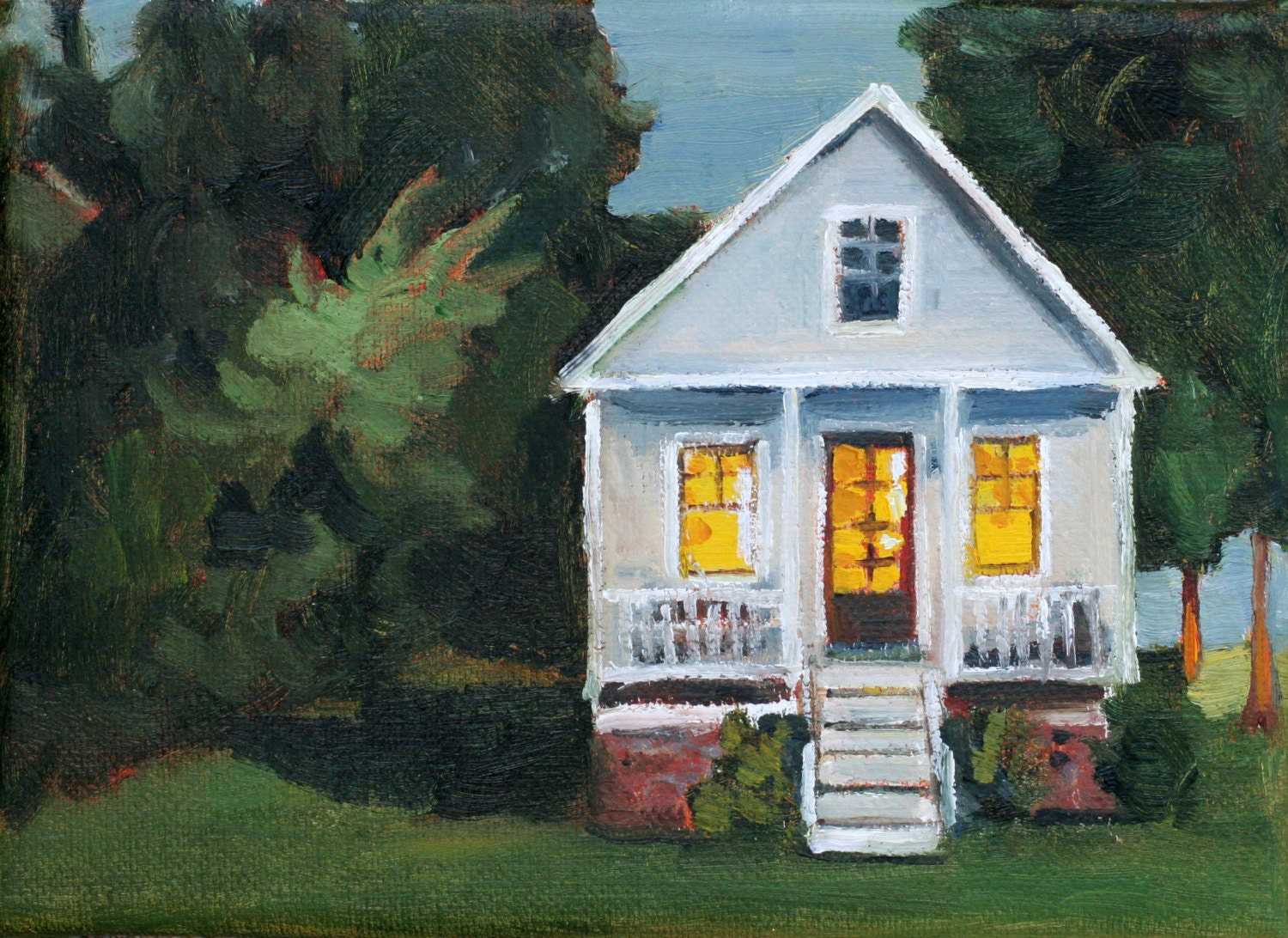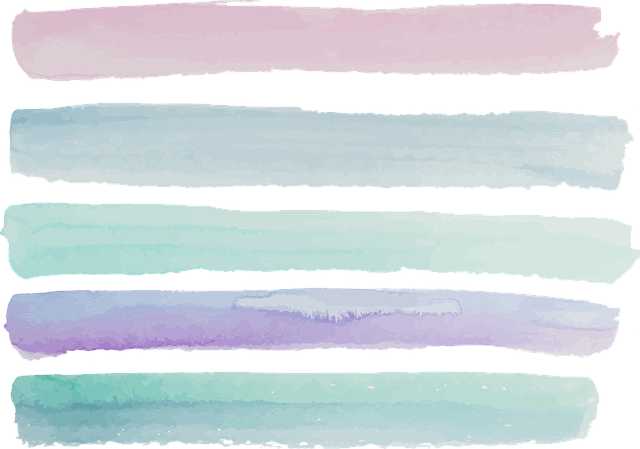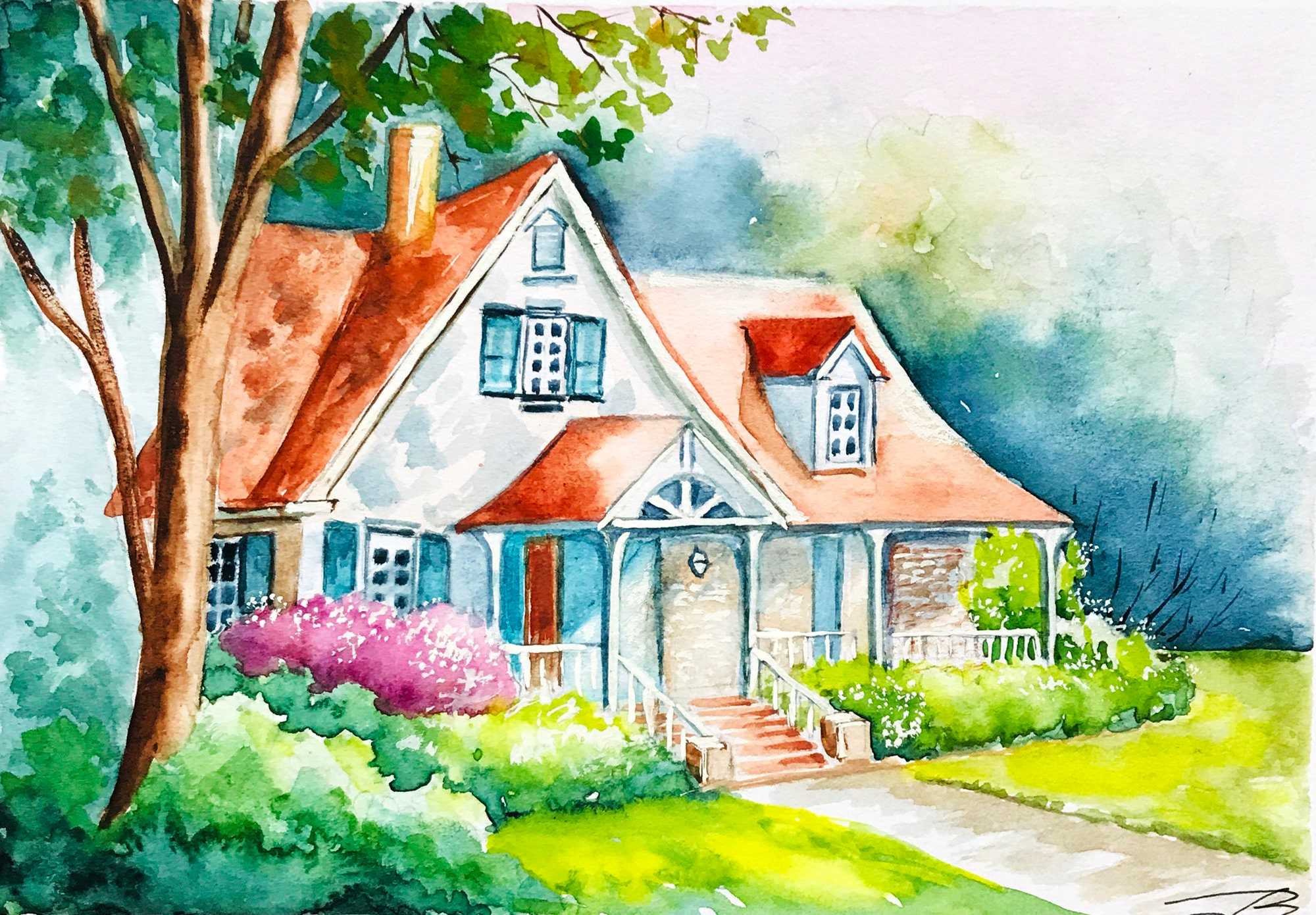Table of Contents
- Exploring the Aesthetic Appeal of House Paintings
- Techniques and Styles That Bring Homes to Life
- Choosing the Right Color Palette for Your Home Artwork
- Incorporating House Paintings into Your Interior Design
- Q&A
- In Conclusion


Exploring the Aesthetic Appeal of House Paintings
The charm of house paintings lies not only in their ability to capture a moment but also in their power to evoke emotion. From tranquil cottages nestled in lush landscapes to modern architectural marvels against a backdrop of urban life, these artworks resonate deeply with their viewers. Each painting serves as a window into a different lifestyle, beckoning us to discover serenity, nostalgia, or even a bustling city vibe. The color palette chosen by the artist can significantly alter the feeling of the piece, transforming the mundane into something extraordinary.
An important aspect of house paintings is their symbolism. A quaint farmhouse may represent warmth and family, while a sleek modern home can reflect ambition and innovation. This duality in representation taps into our personal experiences and aspirations. Artists often utilize various techniques to convey these meanings, such as contrasting colors or playing with light and shadow. The result is an artwork that communicates more than just visual beauty—it tells a story that often mirrors our own lives.
When considering house paintings for personal decor, it’s essential to think about how they will enhance your living space. Their aesthetic appeal is complemented by their versatility. Here are a few considerations to keep in mind:
- Color Harmony: Choose paintings that complement your existing color scheme.
- Size and Scale: Select pieces that fit proportionately within the space to avoid overwhelming or underwhelming the decor.
- Theme Consistency: Ensure the artwork aligns with the overall theme of your home, whether it be rustic, modern, or eclectic.
In galleries and homes alike, the arrangement of house paintings can create a unique narrative. Displaying pieces in a cohesive manner can enhance their aesthetic appeal, initiating a visual journey through different styles and stories. To illustrate, taking inspiration from an artist’s use of perspective can help in arranging paintings on your wall. Consider this simple table for visual organization:
| Painting Style | Suggested Room | Color Palette |
|---|---|---|
| Impressionist Landscapes | Living Room | Soft Pastels |
| Modern Abstract | Office | Bold Primaries |
| Traditional Oil Works | Dining Room | Warm Earth Tones |


Techniques and Styles That Bring Homes to Life
Bringing a house to life through artistic expression involves a blend of techniques and styles that resonate with the personality of the space. One popular approach is to integrate texture into the artwork. Techniques such as impasto, where paint is applied thickly to create depth, can add a tactile quality to a room that invites interaction and engagement. Similarly, mixed media combines various artistic materials—like fabric, paper, and natural elements—to infuse the work with multidimensionality, making each piece a conversation starter.
Choosing the right color palette is crucial in creating a harmonious atmosphere. Artists often turn to the principles of color theory to evoke emotions and set the tone of the residence. Bold hues can transform a drab space into a vibrant haven, while softer pastels result in a serene, cozy environment. A balanced combination of complementary and analogous colors often results in artwork that harmonizes beautifully with the existing decor, enhancing both the art and the home itself.
Incorporating styles from different cultures can also make a significant impact. For example, the Japanese concept of wabi-sabi, which celebrates imperfection and transience, can be captured through art that embraces asymmetry and natural materials. Moreover, bohemian styles, which combine eclectic elements, can introduce a relaxed, inviting energy to a home. This intermingling of styles not only beautifies spaces but also gives personal significance to the artwork, making it a reflection of the inhabitants’ journeys.
| Technique/Style | Description | Ideal Space |
|---|---|---|
| Impasto | Thick paint application for depth. | Living Room |
| Mixed Media | Combining art materials for texture. | Home Office |
| Wabi-Sabi | Celebrating beauty in imperfection. | Bathroom |
| Bohemian | Eclectic and free-spirited mixed styles. | Bedroom |
Choosing the Right Color Palette for Your Home Artwork
When selecting a color palette for artwork that will adorn your home, consider how the colors will interact with the existing hues in your space. The goal is to create harmony while allowing your pieces to stand out. Complementary colors can create vibrant visual interest, while analogous colors contribute to a more cohesive, serene atmosphere. Review the dominant shades in your decor and select artwork that enhances, rather than competes with, these elements.
Another effective strategy is to choose a color palette that reflects the mood you wish to establish in each room. For instance, warm tones like reds and yellows can evoke feelings of energy and enthusiasm, making them ideal for social spaces such as living and dining areas. Cool tones, such as blues and greens, promote relaxation and calmness, making them suitable for bedrooms or meditation corners. Here are a few mood-enhancing palettes to consider:
- Energetic Palette: Bright reds, cheerful yellows, and lively oranges
- Relaxing Palette: Soft blues, gentle greens, and muted purples
- Natural Palette: Earthy browns, olive greens, and muted golds
Don’t forget the importance of balance. Using too many bold colors in your artwork can overwhelm the viewer and disrupt the overall flow of the room. Aim for a blend of color intensities and saturation levels. Consider this simple table to visualize the balance between bold and muted tones:
| Type of Tone | Color Examples | Ideal Placement |
|---|---|---|
| Bold | Crimson, Turquoise, Lemon Yellow | Accent walls, Entry points |
| Muted | Dusty Blue, Sage Green, Soft Peach | Bedrooms, Living Rooms |
consider the impact of lighting on your chosen palette. Natural and artificial light can dramatically alter the perception of color, so it’s essential to test your artwork in the space where it will hang. Observe how colors shift throughout different times of the day and under various lighting conditions. Doing so will ensure that your selected color palette truly enhances your artwork and complements your home’s atmosphere.


Incorporating House Paintings into Your Interior Design
Incorporating paintings of houses into your interior design can add depth and character to your living space. These artworks can serve as conversation starters, showcasing not just a structure, but also the stories and emotions tied to home. The use of color in house paintings can harmonize with your existing décor, directing the flow of energy and ambiance within the room. Consider incorporating pieces that reflect the architectural style of your home or complement its color palette.
When selecting house-themed paintings, it’s essential to think about the scale and placement of the artwork. Large canvases can serve as captivating focal points above mantels or sofas, while smaller pieces can be grouped together in a gallery style, creating a dynamic visual impact. Pay attention to the arrangement and spacing of the paintings – a well-balanced display can enhance the overall aesthetics of the space.
- Texture: Choose paintings with textured surfaces to add dimension to flat walls.
- Color Harmony: Match the color in paintings to your room’s palette for a unified look.
- Framing: Opt for complementary frames that enhance the artwork while aligning with your design theme.
Incorporating house paintings into your interior is not just about aesthetics; it’s about creating a sense of belonging. Whether it’s a serene countryside cottage or a bustling city skyline, each painting brings its unique vibe. To make the most of these pieces, consider creating a layered effect with other décor elements like plants and textiles. Utilizing textures, colors, and even lighting can elevate the visual experience, inviting warmth and personality into your home.
